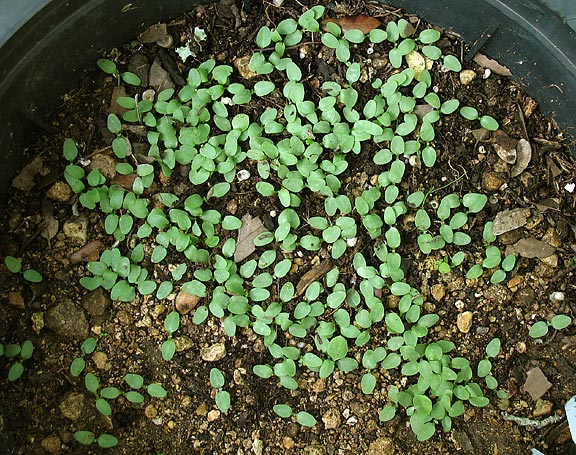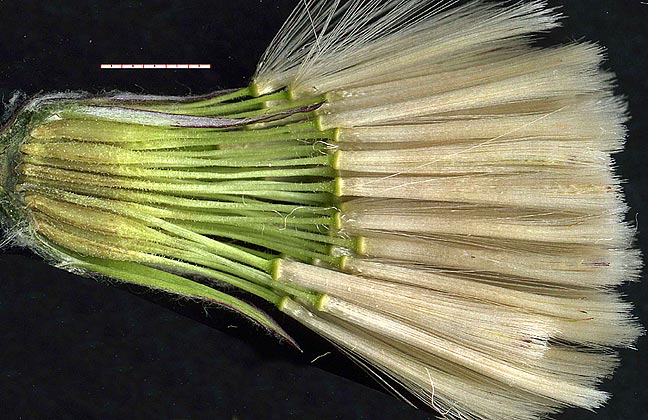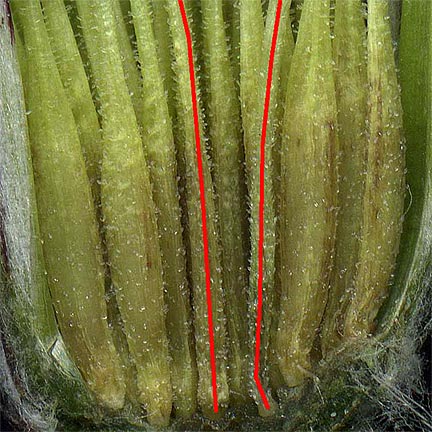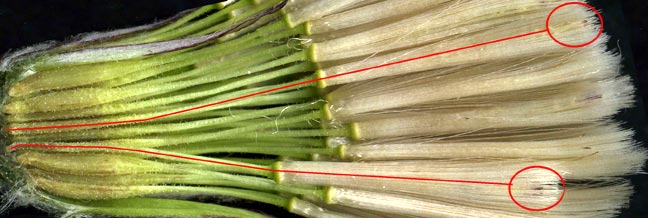





The earliest (March — early April) open–heads did not produce mature/viable achenes. During that period I noted that the anther tubes of the central florets were prominently exerted, but were not opening, and the style branches were not visible. Later, in mid April, the style branches were exerted, and from that time many heads matured to produce viable achenes. On April 23 only 5 buds were found; none of these produced mature heads, although one continued to develop through May 15.
Achenes collected in mid April were collected and planted in a container. The rate of germination seems quite high. (Photo at top of this page)
I thus conclude that the pollen from the central florets is essential for fertilization. No support for self–pollination (even within the central florets, with both stigmata and pollen present) nor apomixis was found.


Type III head with well-developed achenes, April 8. [click to enlarge]
In my opinion, apomixis would appear to be the most plausible means capable of accounting for the high number of fertile achenes in the closed–head florets.


Although the central florets do develop apparently well–formed achenes, a relatively large number of them do not. A set of 24 central–floret achenes collected at dispersal gave the following results: 8 (below left) were clearly well developed; 7 (marked with green 'x') were smaller, but possibly ok; 9 (red 'x') did not seem to have developed.


This was not typical for the eligulate pistillate florets, only a few of which had aborted.
I am left to speculate that perhaps the perfect central florets, unlike the others, develop sexually (whether self–pollinating or not). This would give the plant an adaptive advantage, in contrast with clonal apomictic reproduction. I might also note in this regard that for a large number of plants in the type II/III areas there was no noticeable variation in head morphology, whereas other plants from other areas (types 'II-III' and IV) were quite different.